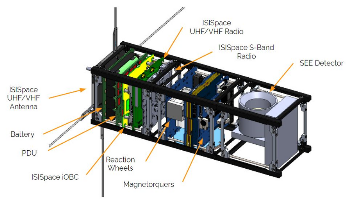| Spacecraft name | VIA-SEEs (Variability In Atmosphere from Solar Energetic Electron Study) |
|---|---|
| Type | CubeSat |
| Units or mass | 3U |
| Status | not launched, expected in 2025 |
| Launcher | not launched |
| Entity name | University of Hawai’i at Mānoa |
| Institution | University |
| Entity type | Academic / Education |
| Headquarters | US |
| Oneliner | |
| Description | |
| Sources | [1] [2] [3] [4] |
| Photo sources | [1] [2] [3] |
Last modified: 2023-12-02




